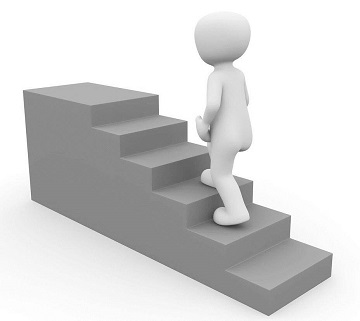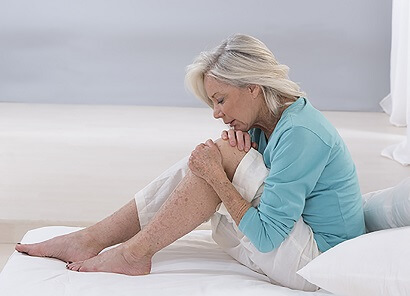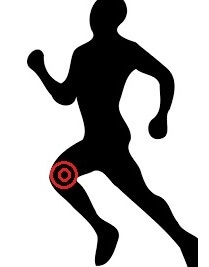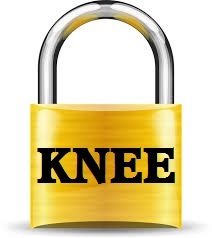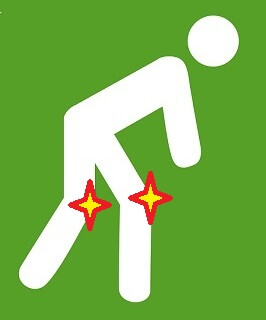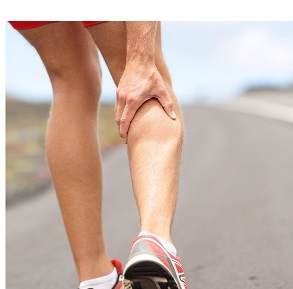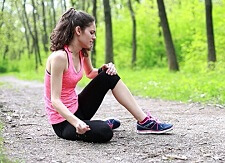- Home
- Knee Symptoms
Knee Symptoms
Written By: Chloe Wilson, BSc(Hons) Physiotherapy
Reviewed by: KPE Medical Review Board
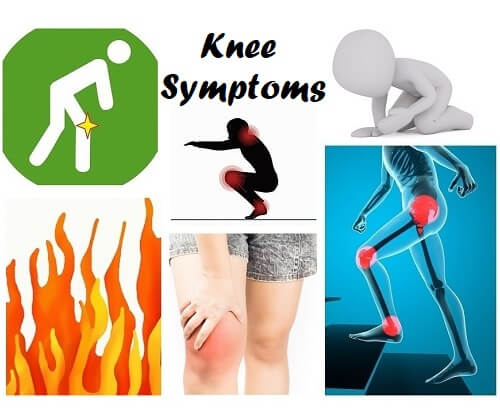
Knee symptoms vary greatly depending on what is going on in and around the knee joint.
There may be burning knee pain, sharp pain, instability, stiffness or difficulty with certain activities.
Each of these knee pain symptoms indicates different problems in the knee joint, and by thinking about what we feel, we can work out what is wrong and what to do to treat it.
Knee symptoms will vary depending on whether you suffered from a specific injury or if the knee pain has built up gradually over time due to an underlying knee problem.
Here we will look at the most common knee pain symptoms and knee injuries symptoms and how to use them to work out what is wrong. We will then go on to look at the best way to treat your knee pain and stop it from coming back.
Common Knee Pain Symptoms
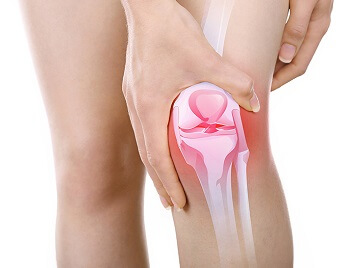
Think about your knee pain symptoms. Are there particular activities when you really notice the pain or things you just don't like to do anymore because it hurts too much?
Does your knee make strange noises? Does it look slightly different to the other knee?
There are so many different knee pain symptoms, it can be helpful to split them into two categories.
1. Knee Pain Symptoms By Activity
There are certain activities that often cause problems if you have a certain underlying knee injury or condition and you may have one or more of the following knee pain symptoms:
- Knee Pain From Running
- Knee Pain On Stairs
- Knee Pain At Night
- Knee Pain When Squatting
- Knee Pain Kneeling
- Knee Pain When Sitting
2. Specific Knee Symptoms
It may be that experience other knee symptoms alongside pain such as:
- Noisy Knees e.g. popping, clicking, grinding
- Knee Locking
- Swelling & Inflammation
- Burning Knee Pain
- Sharp, Catching Pain
- Bony Lump On Knee
- Leg & Calf Muscle Cramps
- Giving Way & Instability
- Severe Knee Pain
- Stiffness & Reduced Movement
Knee Symptoms By Activity
Knee Symptoms By Activity
Let's start by thinking about knee pain symptoms associated with particular activities and what they might mean.
1. Knee Pain On Stairs
One of the most common knee pain symptoms is difficulty getting up and down stairs.
This isn't really surprising when you consider that the force going through the knee cap when you come down stairs is 3.5x bodyweight.
Not only do you need a good range of movement in the knee when going up and down stairs, you also need good strength in the muscles. Stairs is one of the most common activities to cause knee pain symptoms.
In the knee pain on stairs section you can find out all about the common things that cause knee pain when using the stairs, how to treat them and loads of great advice on how to get up and down stairs if knee pain is causing problems.
2. Knee Pain At Night
One of the most frustrating knee pain symptoms is knee pain at night. For so many people suffering from knee pain, night time is the worst time of day.
You might find you are struggling to get to sleep at night, being woken up by knee pain or are waking up feeling exhausted and in pain.
But rest assured, you are not alone, this is a common problem and there are lots of things you can do to help.
In the knee pain at night section we look at the common causes of nocturnal knee pain and how to relieve and prevent knee pain symptoms at night.
3. Knee Pain Bending
Knee pain bending is a common knee pain symptoms. A great deal of force goes through the knee when we do any activities with a bent knee.
There may be a problem inside the knee joint or in one of the surrounding soft tissues, or there may be a problem with how the different knee structures are moving in relation to each other.
knee pain when bending is a relatively common condition, affecting up to 40% of adults at some point in their lives.
You can find out about the most common causes and how to treat the associated knee symptoms in the Knee Pain When Bending section.
4. Knee Pain From Running
Knee pain symptoms are particularly common in runners. Forces up to 550% body weight go through the joint when running so it is not really surprising that it is a common cause of pain.
Knee pain injury symptoms from running may occur during a run, or may not develop until you stop, or even the next day.
But pain when you run isn't something you just have to accept, there is lots you can do to avoid it and treat it.
In the Running Knee Pain diagnosis section, we look at why people get pain when they run and how to prevent and treat this common problem.
5. Pain When Squatting
Problems with squatting down is one of those knee pain symptoms that can affect people numerous times a day - putting your socks on, tying your laces, picking something up off the floor, the list goes on.
Forces up to 7x bodyweight go through the knee when we squat so it's no wonder knee pain with squats is such a common problem.
Knee pain symptoms when squatting can include sharp, stabbing, or burning pain in the front or back of the knee, tenderness around the joint, swelling, and difficulty straightening or bending the leg.
Most cases are due to a combination of inflammation, knee damage, muscle weakness and poor technique.
Find out how you to beat this common knee pain symptom in the knee pain when squatting section.
6. Knee Pain When Sitting
Some knee symptoms get worse with prolonged inactivity e.g. office workers sitting for long periods. The pain may start while sitting or you may not notice it until you actually get up.
Common causes of knee pain when sitting are:
Patellofemoral Syndrome: causes pain and stiffness at the front of the knee
Arthritis:
changes in the bone caused by wear and tear or inflammation
Osgood Schlatters:
common in adolescents, particularly after a growth spurt.
7. Difficulty Kneeling
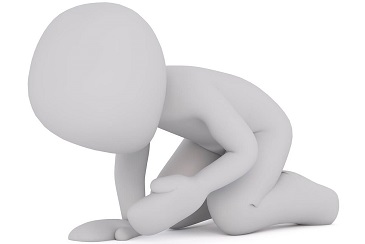
Another common knee pain symptom that affects around 50% of people at some point is pain when kneeling.
Kneeling puts a great deal of pressure through the front of the knee which can cause pain and inflammation.
There may be a burning, stinging, aching or stabbing pain depending on what is wrong. It can also lead to a decrease in range of motion at the knee joint and reduced muscle strength.
You can find out more about this common knee pain symptom, the causes and best treatment options in the knee pain kneeling section.
Specific Knee Pain Symptoms
Specific Knee Pain Symptoms
Now let's have a look at the most common knee symptoms that go alongside knee pain.
1. Noisy Knees
One of the most common knee injury symptoms is noisy knees.
Knees sometimes make strange, disconcerting noises e.g. a sudden pop or a persistent clicking, grinding or crunching. Sometimes it's painful, other times not.
- Knee Injury Symptoms: may occur as a one-off at the time of injury e.g. twisting your knee awkwardly
- Knee Pain Symptoms: may be ongoing either due to an underlying knee condition or from a chronic injury
In the Noisy Knee Pain section we look at the possible causes of strange noises in your knee, how to tell which one is causing your knee symptoms and how to treat them.
2. Knee Swelling
Another common knee injuries symptom is swelling and inflammation.
Virtually any knee problem may be accompanied by swelling. There may be
- Sudden Knee Swelling: which is usually caused by a specific injury, comes on very quickly and may be quite profuse
- Gradual Knee Swelling: which is usually due to a more chronic knee problem, comes on gradually over a few days or weeks and may well fluctuate
Knee swelling may well affect the whole joint or may be restricted to certain locations, e.g. swelling behind the knee or swelling on the side of the knee, depending on the underlying cause.
In the knee swelling section we look at the most common causes of swelling, what they mean, commonly associated knee pain symptoms and how to treat them.
3. Knee Locking
Another possible knee injury symptom is knee locking. Knee locking occurs when something gets stuck in the joint, which blocks the movements and stops you moving the knee.
In most cases, it stops you being able to straighten the knee, but sometimes it can block knee flexion. People who complain of knee locking often find they have to wiggle the knee around before it will then move properly.
In the knee locking section we look at all the possible causes for the knee locking up, the associated knee injury symptoms and what you can do to treat them.
4. Giving Way & Instability
The knee giving way it a rather unpleasant and disconcerting knee injury symptom. This is when the knee buckles underneath you without you being able to control it. You may feel unsteady or even stumble or fall to the ground.
Knee giving way usually indicates:
- Ligament Injury: usually caused by twisting, a force through the knee or the knee bending backwards too far
- Meniscus Tear: often makes the knee feel unstable and can occasionally cause the knee to give way
5. Knee Stiffness
Knee stiffness is another common knee pain symptoms. Knee stiffness may develop suddenly or gradually and often fluctuates.
It could be due to an injury, overuse, or even just your age and is often linked with inflammation.
In the stiff knee section, we look at common causes of knee stiffness, how to make an accurate knee pain diagnosis, and the most effective treatment options.
6. Sharp Knee Pain
Another unpleasant knee injury symptom is a sharp pain in the knee.
A sudden, sharp pain in the knee usually indicates one of two things. Either something is getting squashed e.g. bone or soft tissue, or there is a problem in one of the nerves. The pain may be localised to the knee or spread down the leg.
Sharp knee pain is a relatively common condition, affecting up to 40% of adults at some point in their lives. Common causes include injuries, overuse of the joint, or arthritis.
In the sharp knee pain section we look at the possible causes, how they present, what activities are typically affected and how to treat it.
7. Burning Knee Pain
Another unpleasant knee pain symptoms is burning knee pain, where the knee feels like it is on fire.
Burning knee pain is a fairly common condition. According to some studies, up to 25% of adults may experience knee pain due to the natural wear and tear that comes with age.
Other common causes of burning knee pain include injury or overuse of the joint.
So if your knee feels like it is on fire, visit the burning knee pain section to find out about the possible causes, associated knee symptoms and how to treat them.
8. Severe Knee Pain
Severe knee pain can be extremely concerning and unpleasant. It is often accompanied by other knee pain symptoms such as swelling, instability, redness and an obvious deformity. The pain may come on very suddenly or gradually over time and symptoms may fluctuate.
In this section we look at the most common causes of severe knee pain, how to work out which one you are suffering from and how to treat it.
9. Leg Cramps
Muscle cramp is a common problem, particularly during or after exercise, or at night time.
It can been extremely painful and whilst the cramping may only last for a few minutes, the calf may remain painful for a few hours or even days.
You can find out all about the most common causes of cramp in the lower leg including diagnosis, symptoms and treatment in the leg cramps section.
10. Bony Lump
One of the less common knee pain symptoms is a bony lump. Lumps can occur anywhere around the knee but are most common just below the knee cap.
A bony lump here is a classic sign of Osgood Schlatters, a condition that typically affects teenagers and young adults particularly after a growth spurt. Tension on the tendon damages the bone, which often results in a hard lump on the shin.
Find out more about the common causes, knee symptoms, diagnosis and treatment options in the Osgood Schlatter section.
11. Location of Knee Pain
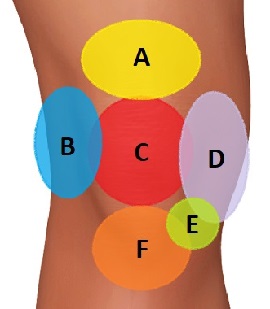
One really useful way to think about knee pain symptoms when trying to work out what is causing knee pain is the location of the pain.
Think about where the majority of your knee symptoms are. There may be front knee pain, pain behind the knee, discomfort on the side of the knee or it may be the kneecap that is causing problems.
Visit the knee pain diagnosis section to work out what your symptoms mean by where they are in the knee and what you can do about them.
When To See Your Doctor
Some knee pain and injury symptoms may be a sign that there is something serious going on. See you doctor as soon as possible if you have any of the following knee symptoms:
- You are unable to take any weight on your leg
- Your knee is giving way / collapsing when you stand or walk
- Your knee movement is markedly reduced
- There is severe knee swelling
- You are in severe pain
- There is an obvious deformity of your leg
- You knee pain is accompanied by redness, swelling and you are feeling unwell/have a fever
- You notice any changes in bladder/bowel function, vision or sensation in your leg
- You have had any unexplained weight loss
If you are at all worried about your knee symptoms, even if you don't have any of the ones listed above, do get checked out by your doctor.
Knee Pain Symptoms Summary
The most common knee pain symptoms are:
- Swelling: Sudden knee swelling usually indicates a knee injury, gradual knee swelling usually indicates an underlying knee condition
- Instability Or Weakness: If your knee actually collapses under you, it is likely due to a ligament tear or meniscus tear. Weakness is one of the most common knee pain symptoms with almost any knee problem and responds well to strengthening exercises
- Popping/Clicking/Grinding Noises: Strange knee noises are a common knee injury symptom at the time of injury, often indicating a ligament injury. Ongoing clicking or grinding noises are a common chronic knee pain symptom often associated with arthritis or meniscus degeneration
- Reduced Knee Movement: Stiffness is a common knee pain symptom. There may be something physically blocking the movement e.g. meniscus tear, there may be muscle weakness limiting movement or pain may be the limiting factor. Find out more in the stiff knee article
- Redness and/or Warmth: If the knee feels warm to touch and is red, it may indicate a serious problem such as an infection or DVT - see you doctor immediately
Page Last Updated: 07/02/23
Next Review Due: 07/02/25
Related Articles
References
1. Clinical Journal of Pain: The influence of knee pain location on symptoms, functional status and knee-related quality of life in older adults with chronic knee pain. June 2016
